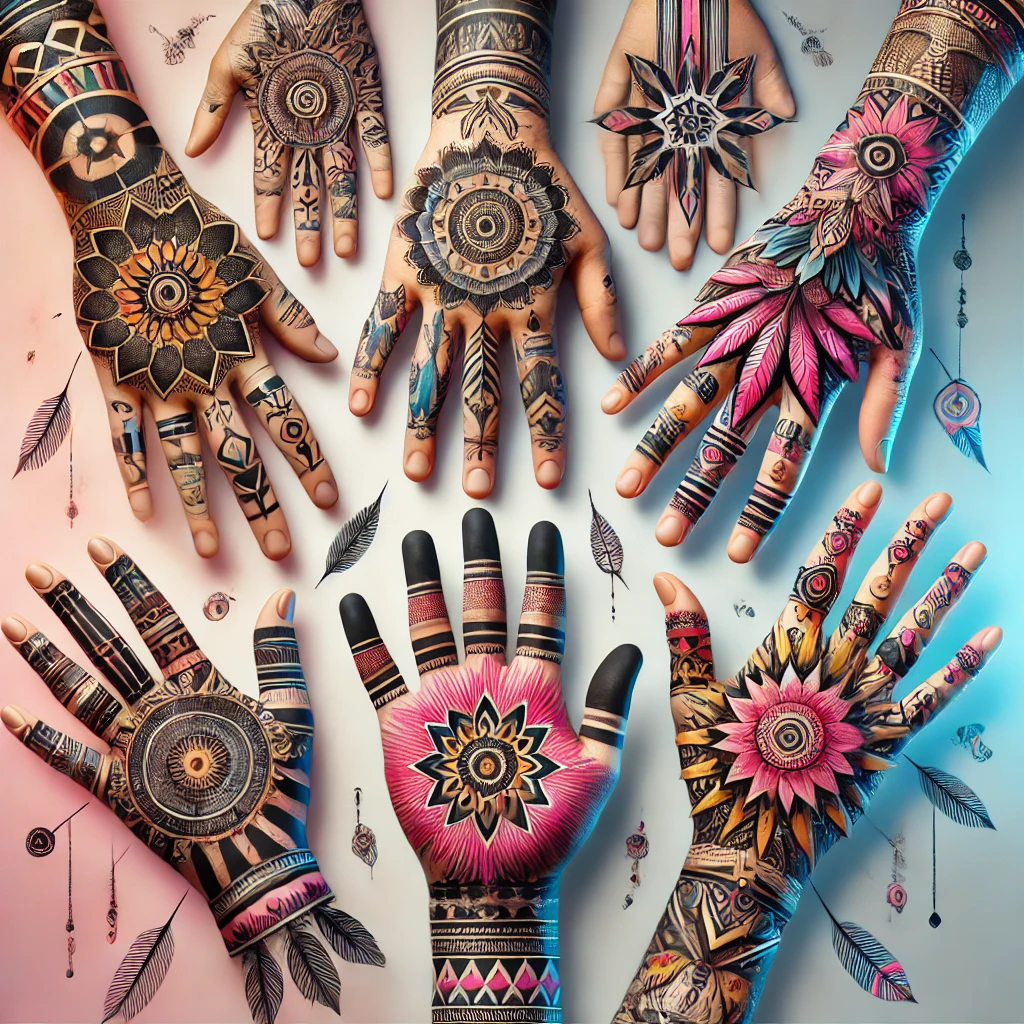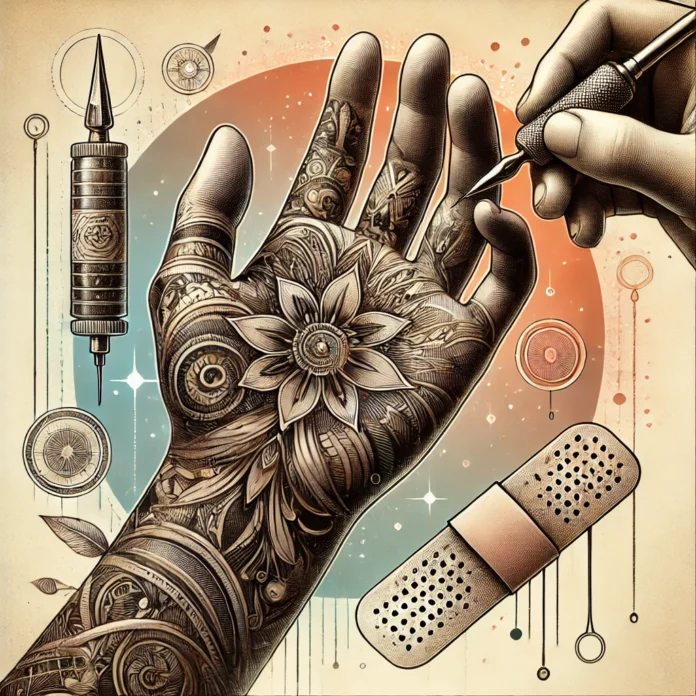Tattoos have long been a form of self-expression, storytelling, and artistry. From intricate sleeve designs to minimalist line work, tattoos come in countless styles and placements. However, one of the most intriguing and challenging areas for tattooing is the palm. Palm tattoos are not only visually striking but also carry a unique set of complexities that set them apart from other types of body art. In this blog post, we’ll explore the intricacies of palm tattoos, from their cultural significance to the technical challenges they present, and why they’ve become a growing trend in the tattoo world.
The Allure of Palm Tattoos
Palm tattoos are undeniably captivating. Their placement is unconventional, making them stand out in a sea of more common tattoo locations like arms, legs, and backs. The palm is a highly visible yet intimate area, often associated with touch, connection, and energy. This makes palm tattoos deeply personal and symbolic.
For many, palm tattoos are more than just decorative—they are a statement. They can represent strength, resilience, or a connection to spirituality. In some cultures, the palm is believed to be a conduit for energy, making tattoos in this area particularly meaningful. Whether it’s a small symbol, a word, or an elaborate design, palm tattoos carry a weight that goes beyond their aesthetic appeal.
Why Palm Tattoos Are Painful: Real Truth
Palm tattoos are undeniably striking, but they come with a reputation for being exceptionally painful. But why is this the case? The answer lies in the unique anatomy of the palm.
The palms are packed with nerve endings, making them one of the most sensitive areas of the body. Every touch, grip, or movement sends signals to the brain, and this heightened sensitivity amplifies the pain during tattooing. Additionally, the skin on the palm is thicker and tougher than other areas, requiring the tattoo needle to work harder to deposit ink. This combination of dense nerve clusters and resilient skin creates a perfect storm of discomfort.
The Technical Challenges of Palm Tattoos
While palm tattoos are undeniably beautiful, they are also one of the most difficult types of tattoos to execute. Here’s why:
- Skin Anatomy: The skin on the palm is fundamentally different from the skin on other parts of the body. It’s thicker, tougher, and has fewer hair follicles and sweat glands. This unique texture makes it harder for ink to settle evenly, often resulting in faded or blurred designs over time.
- Constant Use: Our palms are in constant motion—gripping, touching, and flexing. This frequent movement causes the skin to regenerate faster, which can lead to ink rejection or fading. As a result, palm tattoos often require touch-ups to maintain their clarity.
- Pain Level: Let’s not sugarcoat it—palm tattoos are painful. The palm is packed with nerve endings, making it one of the most sensitive areas to tattoo. For those with a low pain tolerance, this can be a significant deterrent.
- Healing Process: The healing process for palm tattoos is notoriously tricky. Because the hands are constantly exposed to dirt, moisture, and friction, keeping the area clean and undisturbed is a challenge. Proper aftercare is crucial to prevent infections and ensure the tattoo heals well.
Cultural and Symbolic Significance of Palm Tattoos
Palm tattoos have a rich history and cultural significance across the globe. In many traditions, the palm is seen as a powerful symbol of life, destiny, and energy. Here are a few examples:
- Hinduism and Buddhism: In these traditions, the palm is often associated with the concept of “mudras,” or hand gestures used in meditation and spiritual practices. Tattoos on the palm can symbolize a connection to these ancient practices and serve as a reminder of one’s spiritual journey.
- Middle Eastern Cultures: In some Middle Eastern cultures, henna designs on the palms are a common form of temporary body art, often used during celebrations and ceremonies. While henna is not permanent, it reflects the cultural importance of adorning the palms.
- Western Symbolism: In Western cultures, palm tattoos are often associated with individuality and rebellion. They are a bold choice that defies conventional tattoo norms, making them popular among those who want to make a statement.

Popular Palm Tattoo Designs
Despite the challenges, palm tattoos have gained popularity in recent years, thanks in part to their unique aesthetic. Here are some of the most popular designs:
- Minimalist Symbols: Small, simple designs like hearts, stars, or geometric shapes are a popular choice for palm tattoos. Their simplicity makes them less prone to fading and easier to maintain.
- Words and Phrases: Many people choose to tattoo meaningful words or phrases on their palms. These can serve as daily reminders of personal mantras, values, or loved ones.
- Floral Patterns: Intricate floral designs are another popular option. While they require a skilled artist to execute, the results can be stunning.
- Abstract Art: For those who want something truly unique, abstract designs offer endless possibilities. These tattoos often incorporate bold lines, shapes, and patterns to create a one-of-a-kind piece.
Tips for Getting a Palm Tattoo
If you’re considering a palm tattoo, here are some tips to ensure the best possible experience:
- Choose the Right Artist: Not all tattoo artists are experienced in palm tattoos. Look for someone who specializes in this area and has a portfolio of successful palm tattoo work.
- Be Prepared for Pain: Palm tattoos are painful, so mentally prepare yourself for the experience. Some people find it helpful to bring a friend for support or use numbing creams (with your artist’s approval).
- Follow Aftercare Instructions: Proper aftercare is essential for palm tattoos. Keep the area clean, avoid excessive moisture, and follow your artist’s instructions to prevent infections and fading.
- Expect Touch-Ups: Due to the nature of palm skin, touch-ups are often necessary. Be prepared to revisit your artist to maintain the clarity of your tattoo.
Healing Time and Aftercare for Palm Tattoos
The Future of Palm Tattoos
As tattoo technology and techniques continue to evolve, palm tattoos are becoming more accessible and durable. Advances in ink formulations and aftercare products are helping to extend the lifespan of these tattoos, making them a more viable option for those who want to experiment with unconventional placements.
Moreover, as societal attitudes toward tattoos continue to shift, palm tattoos are likely to become even more mainstream. They offer a unique way to express individuality and creativity, making them a compelling choice for tattoo enthusiasts.
Conclusion
Palm tattoos are a fascinating blend of art, pain, and symbolism. They challenge both the artist and the wearer, requiring a high level of skill, patience, and commitment. While they may not be for everyone, their unique beauty and cultural significance make them a captivating choice for those who dare to venture into this complex form of body art.
Whether you’re drawn to their aesthetic appeal, their spiritual symbolism, or their rebellious nature, palm tattoos are a testament to the endless possibilities of self-expression through ink. If you’re considering a palm tattoo, take the time to research, plan, and choose an experienced artist who can bring your vision to life. After all, a palm tattoo is not just a design—it’s a statement.
